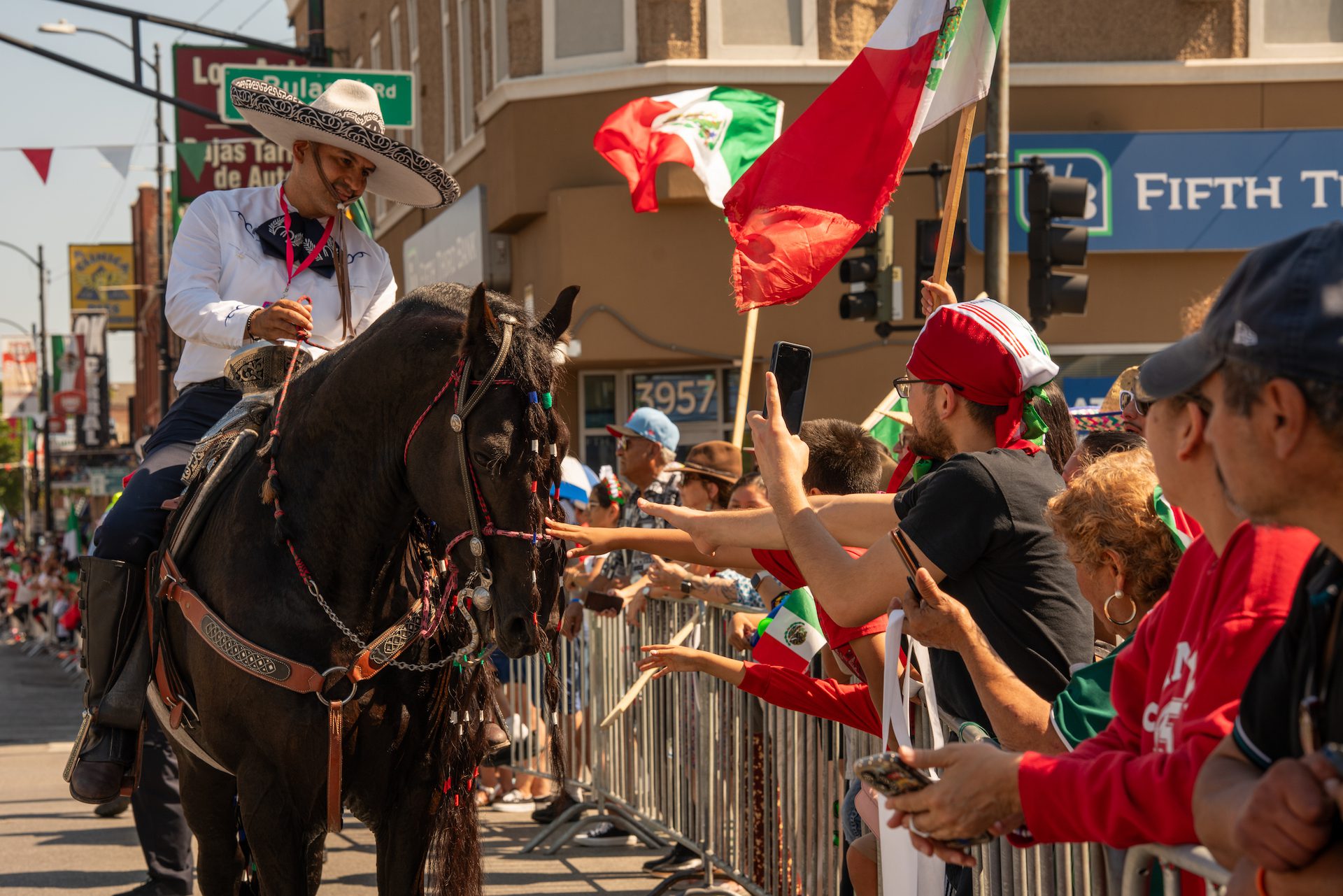 Camilla Forte/Borderless Magazine/Catchlight Local/Report for America
Camilla Forte/Borderless Magazine/Catchlight Local/Report for AmericaAs thousands celebrated their pride during this weekend’s Mexican Independence Day celebrations, many also took a stand against the Trump administration’s immigration enforcement activity in Chicago.
Over the weekend, 26th Street in Little Village transformed into a sea of green, red and white for Mexican Independence Day. The sounds of wooden noisemakers, plastic horns and shouts of “Viva Mexico” filled the air as thousands gathered for the annual parade.
Fifteen miles southeast, in South Chicago, a few thousand attendees gathered for a similar celebration. People pulled up lawn chairs and stood on street corners in front of homes and shops along Commercial Avenue as classic cars and floats for small businesses passed by.
The parades, organized by the Little Village Chamber of Commerce and the Mexican Patriotic Club, respectively, celebrated Mexican Independence Day ahead of the holiday on Sept. 16, the day Mexico declared independence from Spain in 1810.
¿Quieres recibir historias como esta en tu correo cada semana?
Suscríbase a nuestro boletín gratuito.

For attendees, the celebrations were a way to show pride in their traditions and culture, especially amid the rise of Immigration and Customs Enforcement (ICE) activity nationwide.
“I want people to know that ICE raids will not intimidate us,” said Evelyn Carmona-Villegas, a Little Village parade attendee. “We’re here, and we’re here to stay.”
Carmona-Villegas was one of many in Sunday’s crowd who carried signs of protest against immigration enforcement in addition to the typical Mexican flags.
Signs displayed messages including “Migra: Fuera de Chicago,” meaning “ICE: Out of Chicago,” and “ICE Lies: Justice for Silverio,” to call attention to the death of Silverio Villegas-Gonzalez, who an ICE agent fatally shot in Franklin Park just days before the parade.
Villegas-Gonzalez’s killing comes alongside other immigration enforcement activity possibly linked to the Department of Homeland Security’s “Operation Midway Blitz,” which aims to target immigrants with criminal records in Illinois for arrest.
DHS has not released specific details on how the operation has changed immigration enforcement in Chicago or what resources will be allocated to it. However, according to an internal memo obtained by CBS News, DHS planned to stage roughly 250 federal agents and 140 vehicles at a Navy base in Illinois ahead of the operation.

Despite fears of immigration enforcement activity, the parades in Little Village and South Chicago continued. The theme for the Little Village parade was “Orgullo y Poder: Our Strength, Our Legacy.” Organizers say it reflects the contributions and successes of local community members, business owners and leaders.
“In times of uncertainty, our community’s response is not to retreat, but to stand even taller,” Jennifer Aguilar, executive director of the Little Village Chamber of Commerce, said in a press release.
Organizers of the Mexican Independence Day parade in South Chicago echoed that sentiment.
“Our neighborhood, the strong people in it, and our strength in unity is what makes up this community,” Carmela Vargas, with the Mexican Patriotic Club, said via email about the South Chicago parade. “This neighborhood deserves a great parade every year.”
Paradegoers also reflected on the importance of celebrations like these for preserving culture and identity for younger generations of Mexican American immigrants.
Carmen Gomez, 60, has lived in Little Village for 30 years and was at Sunday’s parade. Although her children were born here and celebrate different holidays, Gomez said it’s important that they also celebrate her traditions.
“It’s important for us that our traditions don’t get lost or forgotten by our children that we have here, and that they keep up with our customs,” Gomez said.
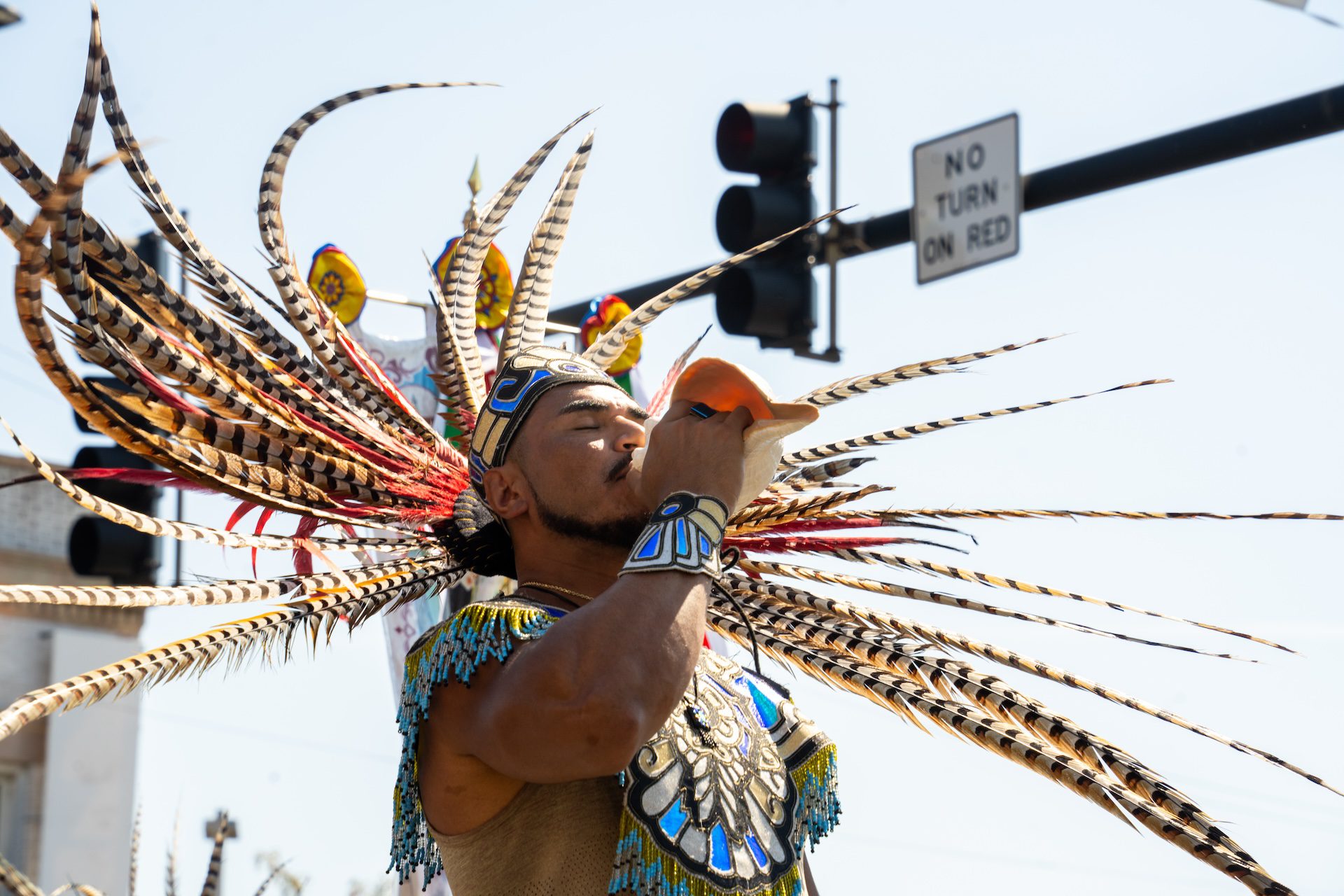
Jonathan Espinoza, 35, lives down the block from the parade route and comes by with his family every year, setting up a tent to watch the floats, live music and folklórico dancers pass by.
“It’s more than just a parade. It’s a tradition,” said Espinoza, who was born in Mexico. “[For] every person that comes from Mexico, it’s like a piece from home that everybody looks forward to every year.”
Katrina Pham es la reportera de audiencia y redes sociales de Borderless Magazine. Envíe un correo electrónico a Katrina a [email protected].
Max Herman is Borderless Magazine’s Visuals Editor. Email Max at [email protected].
Camilla Forte es becaria de CatchLight y miembro de Report for America cubriendo las comunidades inmigrantes para Borderless Magazine. Puede ponerse en contacto con ella en [email protected].
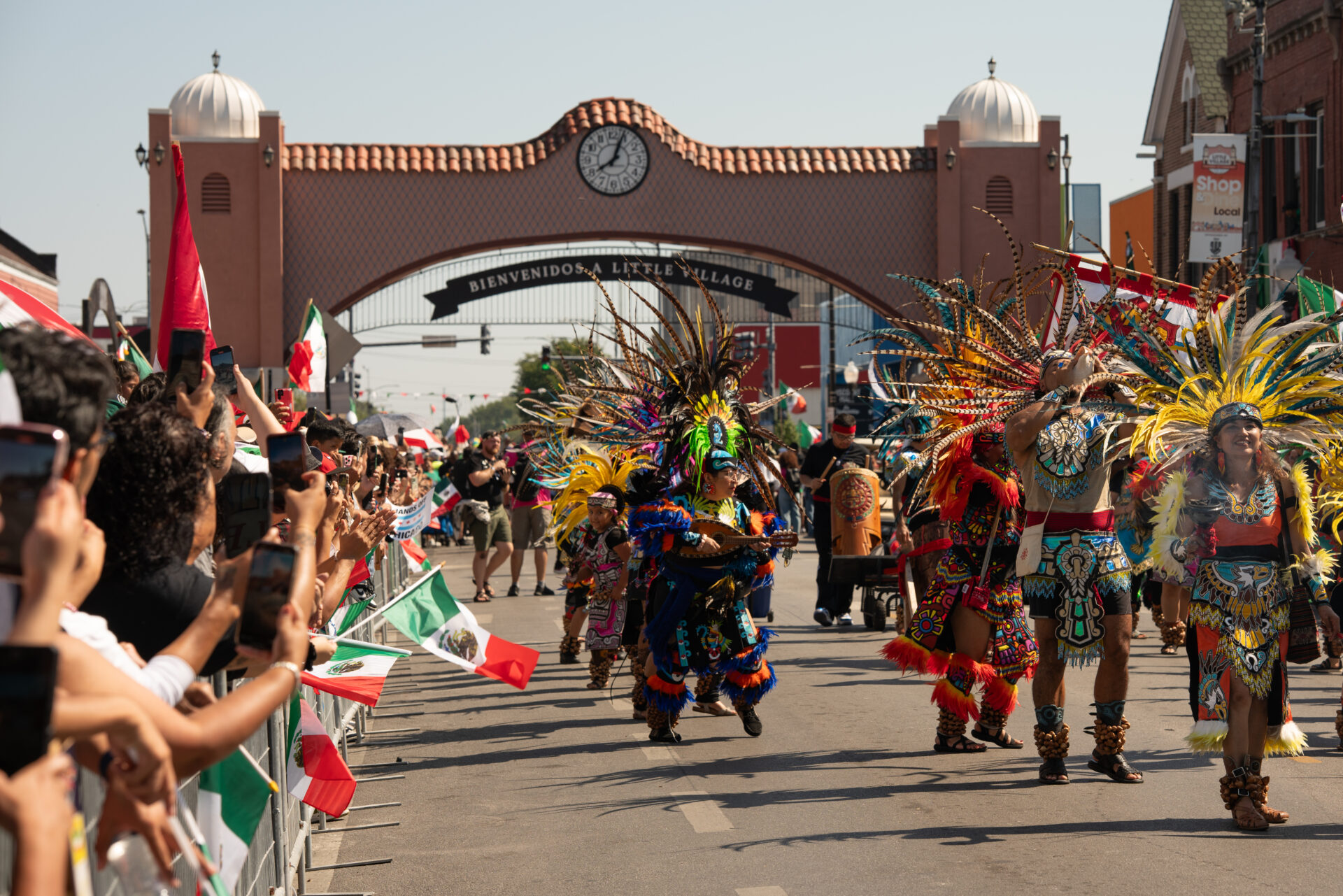

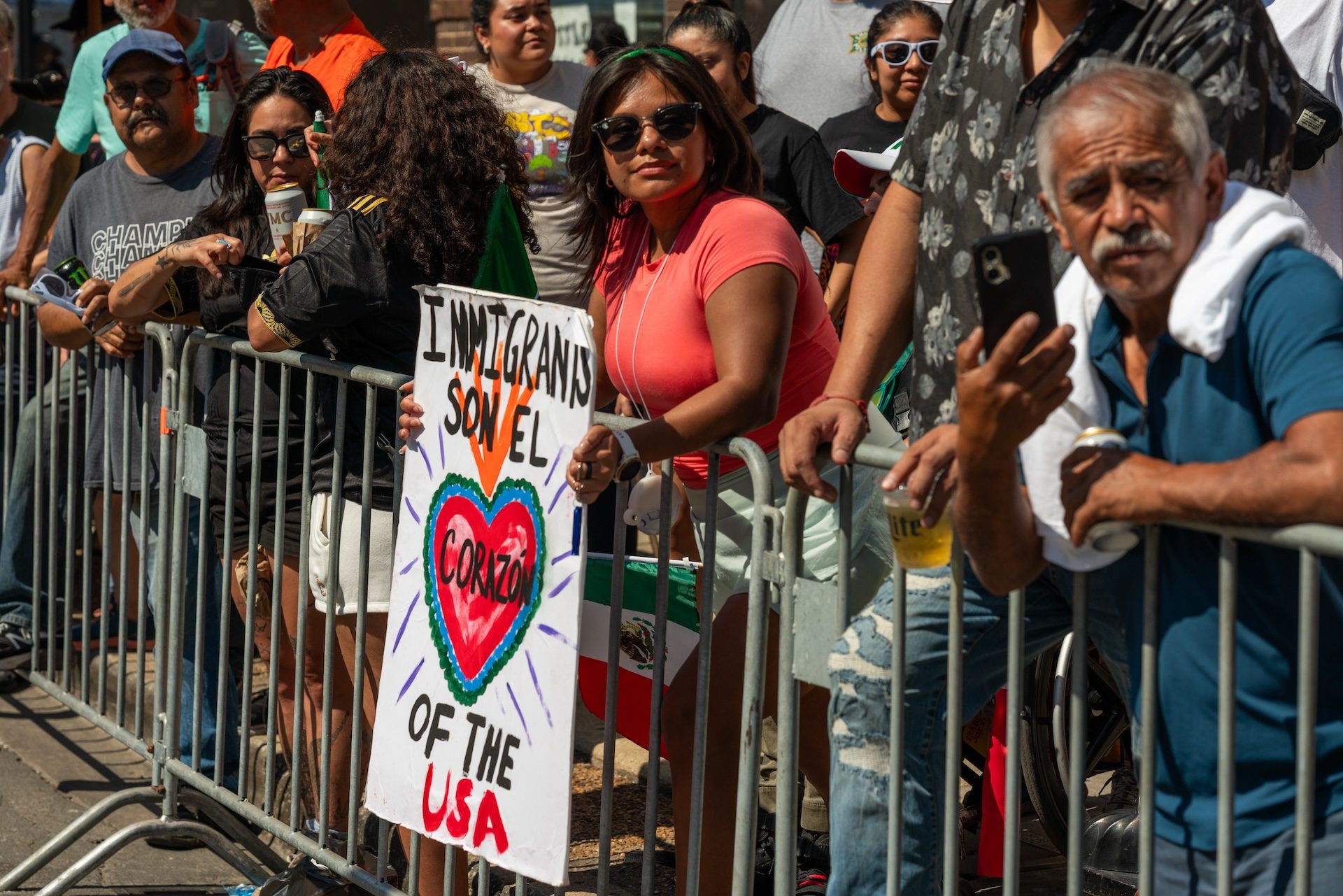
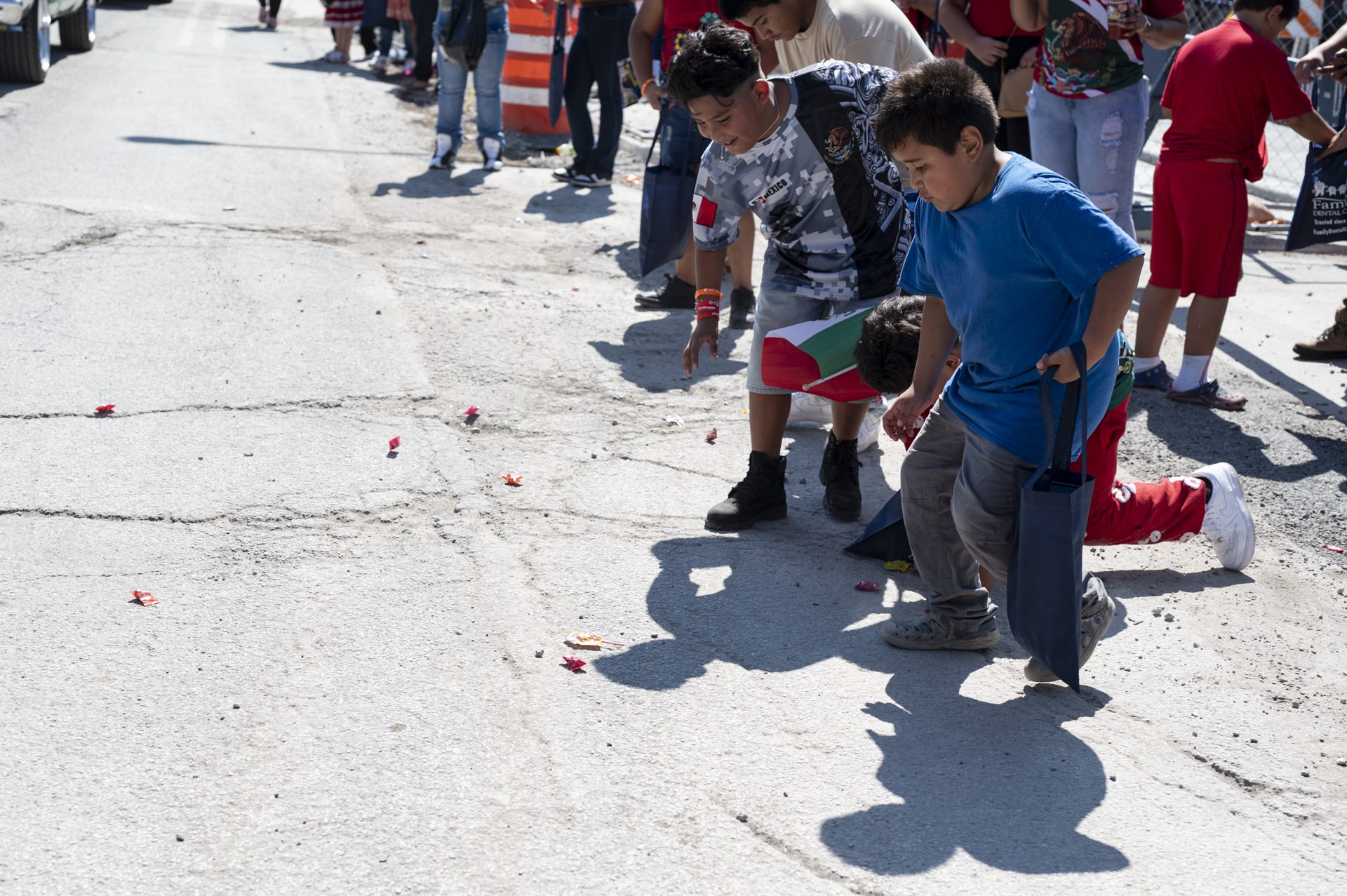
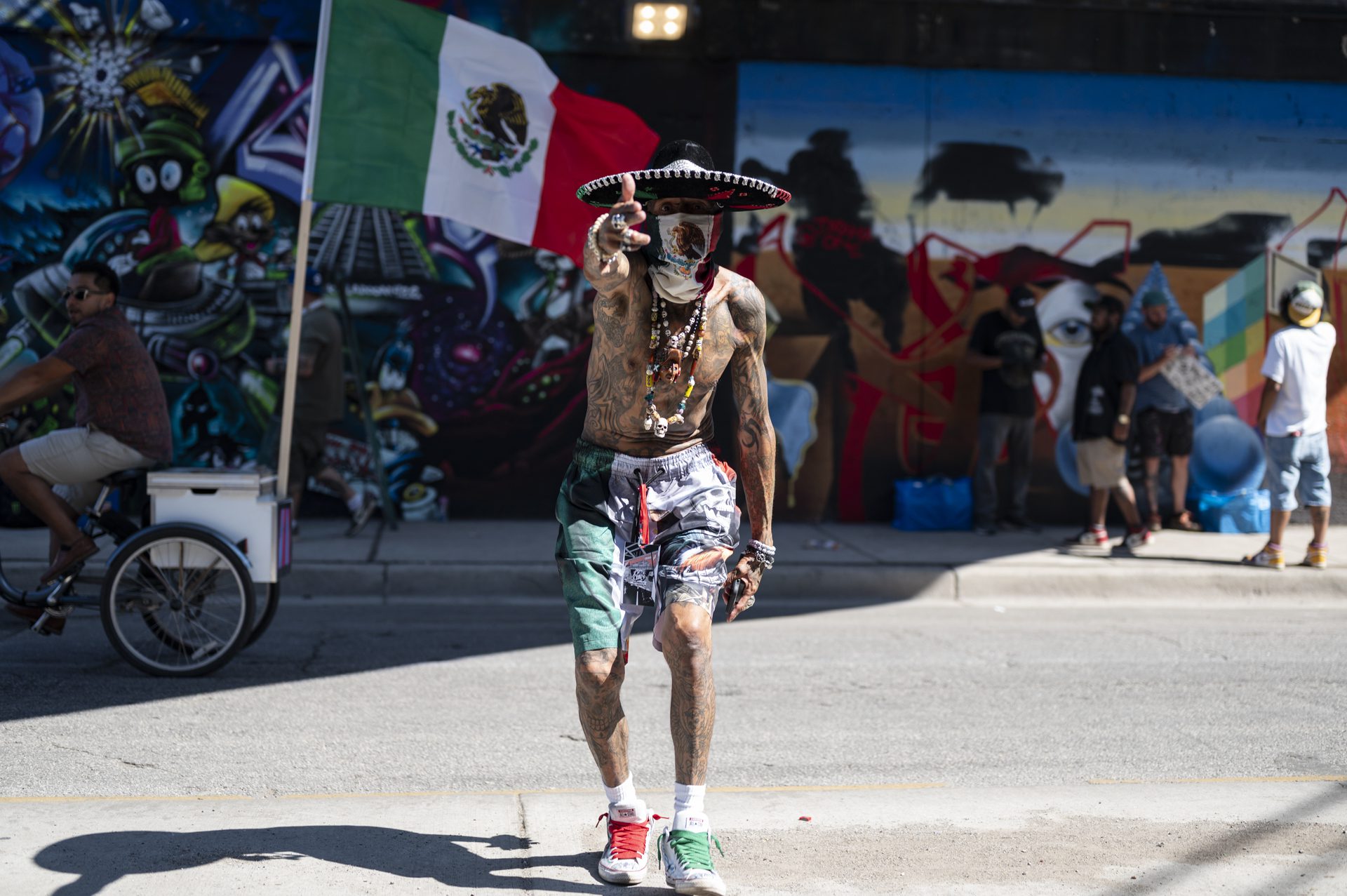
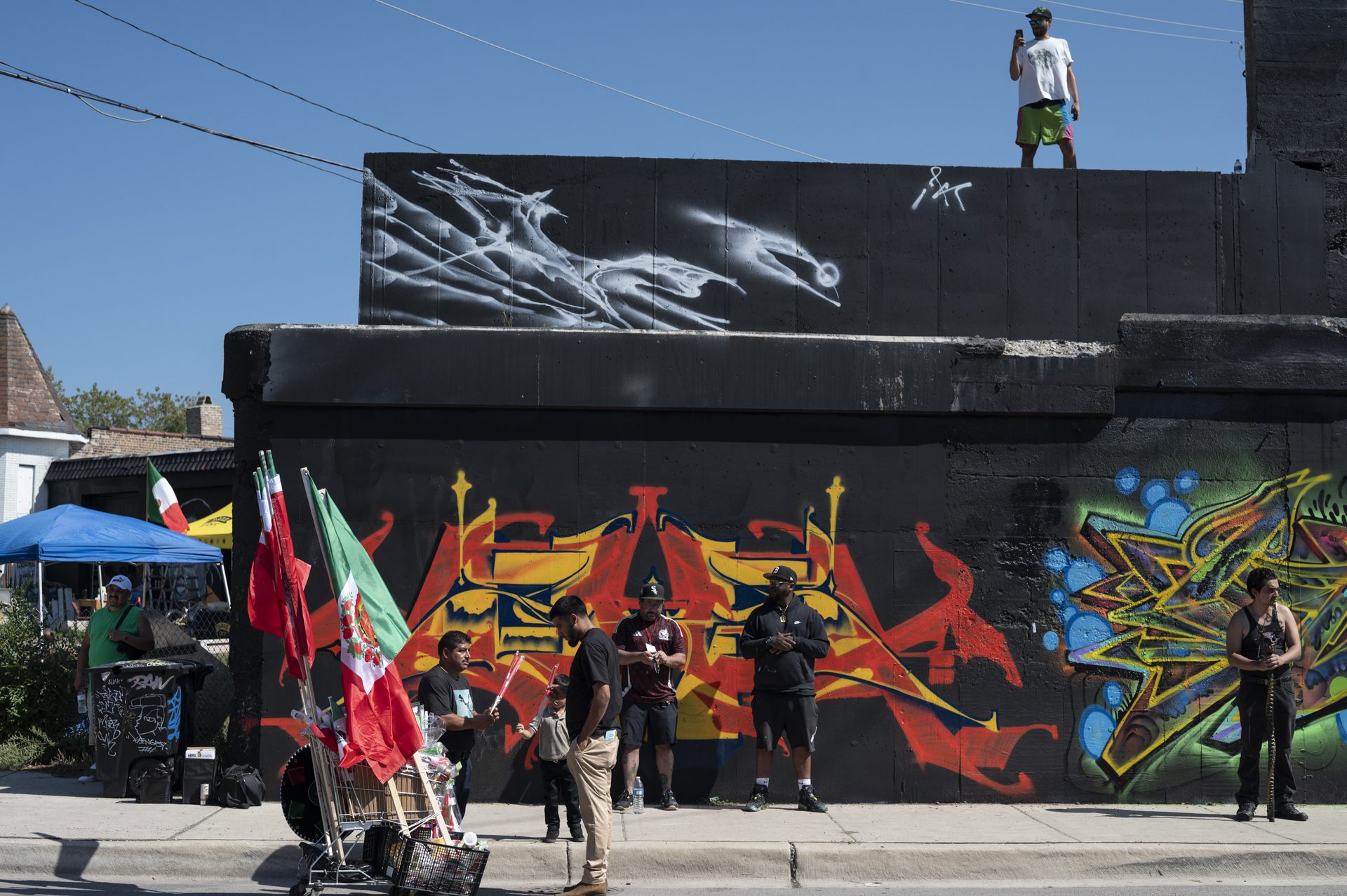
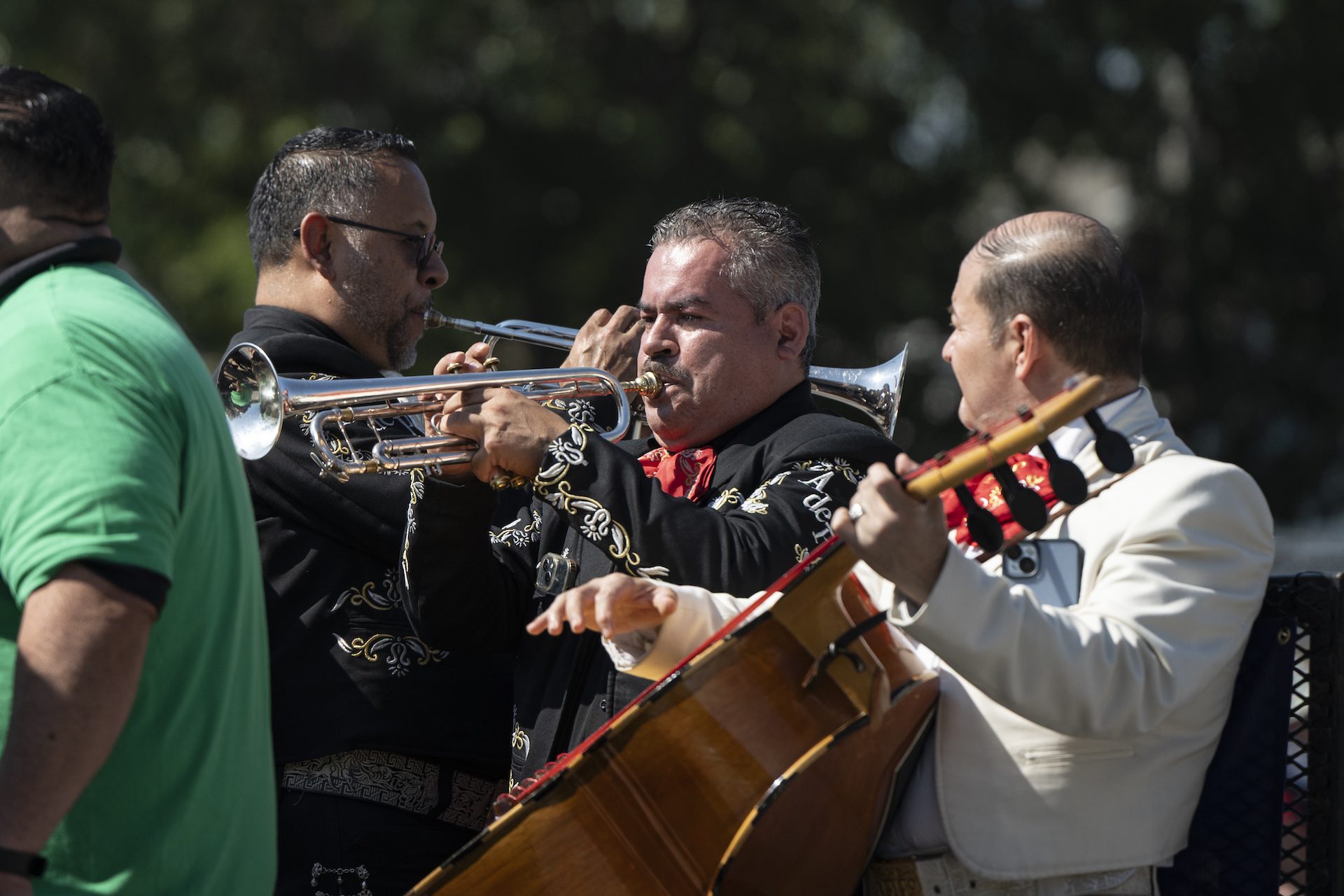


Da poder a las voces de los inmigrantes
Nuestro trabajo es posible gracias a las donaciones de personas como usted. Apoye la información de alta calidad haciendo una donación deducible de impuestos hoy mismo.

